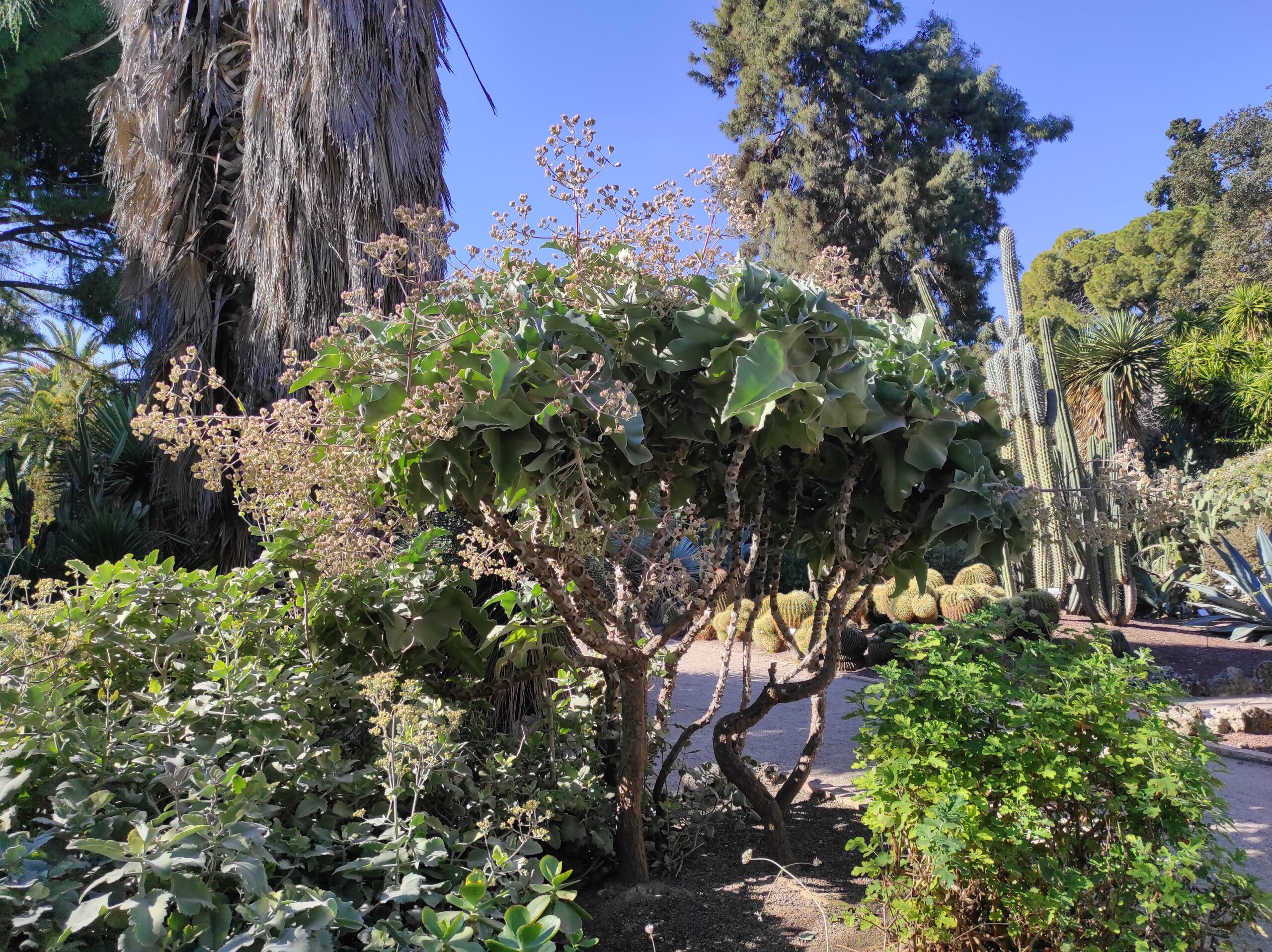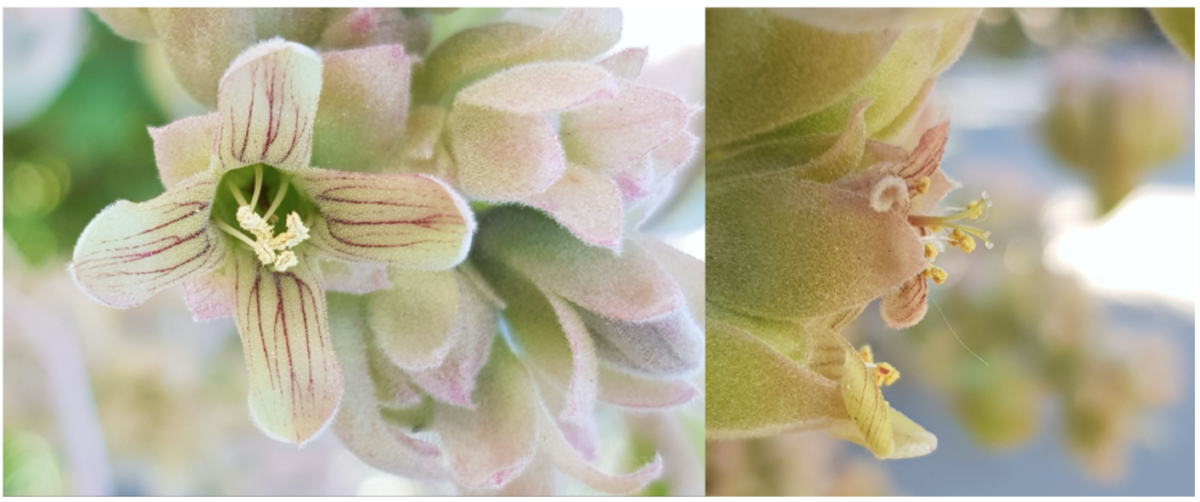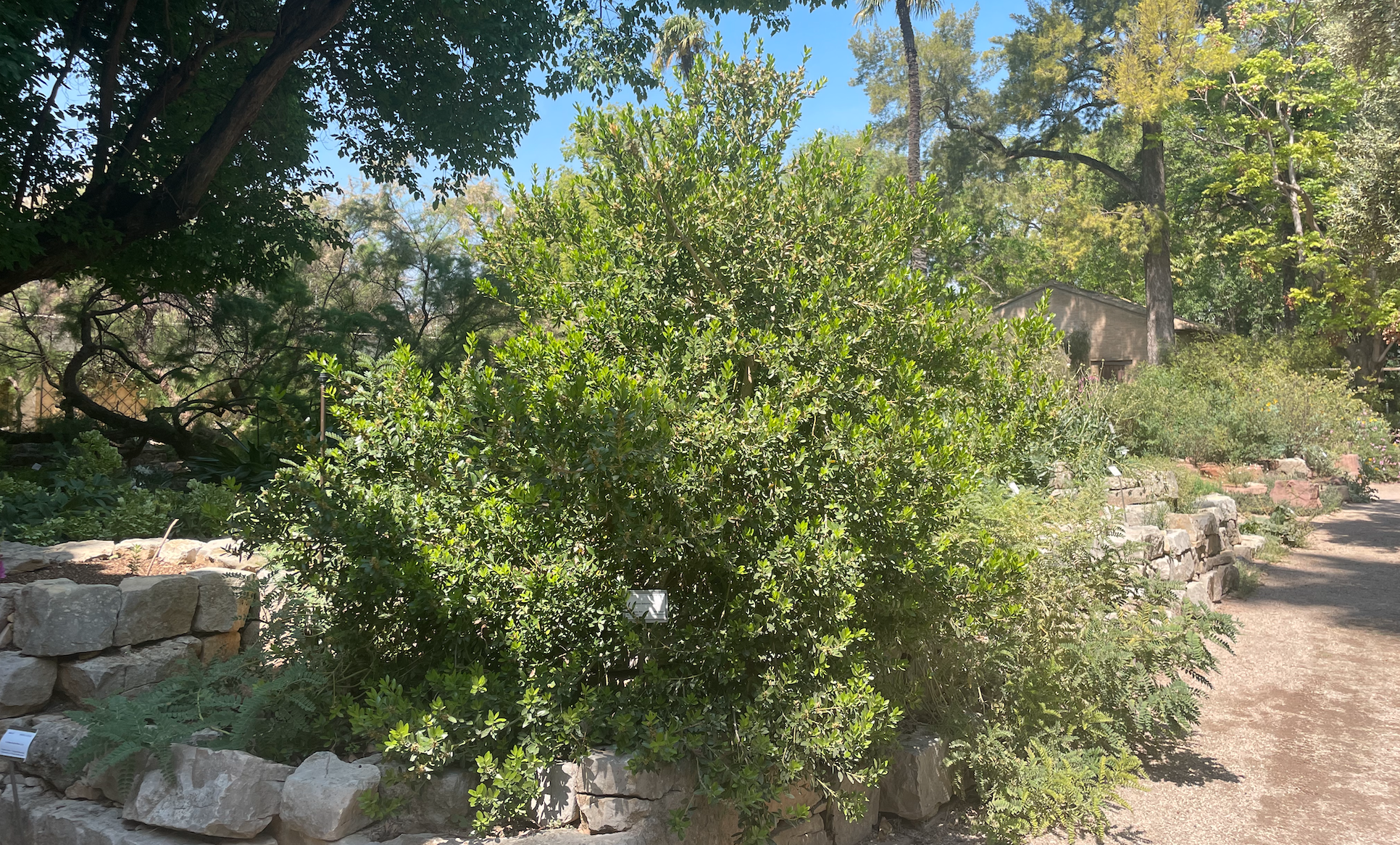Elephant’s ear Kalanchoe, the Jardí Botànic’s February plant

We are in the middle of winter and many trees have completely lost their leaves, however, the Jardí is always evolving and we find a special charm in each of its corners. For this reason, in February we would like to highlight one of our succulent species, the Elephant's ear (Kalanchoe beharensis Drake), which in this season of the year flowers to give an added attraction to the Jardí Botànic.
At the Jardí Botànic we like to highlight certain plants depending on the time of year when they are most spectacular. In February, which has already begun, we bring you the Elephant’s ear, which is at its most splendor this season, and we want to show you the world around it and the reason why we highlight it. Although its scientific name is Kalanchoe beharensis Drake, it is commonly called “Elephant’s ear” because of the greyish colour and the size of its leaves, which remind us of the ears of this great mammal. It belongs to the genus Kalanchoe, of the Crassulaceae family, a genus with approximately 150 species distributed all over the world. We are in the middle of winter and many trees have completely lost their leaves, however, the Jardí Botànic is always in continuous evolution and we find a special charm in each of its corners. For this reason, in February we would like to highlight one of our succulent species, the Elephant’s ear (Kalanchoe beharensis Drake), which in this season of the year flowers to give an added attraction to the Jardí Botànic.
First of all, it is worth mentioning that it was described by a French botanist of Spanish origin in 1903, Emmanuel Drake del Castell (1855-1904), based on plant samples collected by a zoologist, also French, Guillaume Grandidier (1873-1957) in Behana, a locality in the south of Madagascar. He described as many as 528 different species in the Bulletin du Musée d’Histoire Naturelle de Paris, including the highly prized K. beharensis, the largest of its genus and one of the most ornamentally desirable.
Botanical Description
On the material collected by Grandidier in Madagascar, Drake del Castillo described in detail Kalanchoe beharensis, which, with the right soil conditions, can reach up to 3 metres in height, which allows it to be considered arborescent, a rare condition in most cultivated individuals. It is very easy to distinguish with the naked eye, as its organs are abundantly hairy, giving it a greyish-green, soft-touch appearance.

Initially, the stems are straight, with a greyish bark and a large number of triangular marks caused by the fall of the fleshy leaves. This plant is particularly notable for its leaves, which are up to 40 cm long, crass, alternate, simple, triangular, slightly lobed and with a base joined to a long petiole up to 15 cm long. It is worth mentioning that the more mature leaves become naturally thickened and brownish in colour.

As for the inflorescences, they appear laterally in a highly branched form, with whorled tetramerous flowers of between 12 and 15 mm, with urceolate corolla, i.e. these flowers contain mainly 4 greenish sepals and 4 petals with curved lobes welded together almost along their entire length, of a yellowish-greenish colour, sometimes with pinkish tones on the inner side and very marked dark veins. The flowers are hermaphrodite, in other words, the same flower contains both male and female organs, the androecium with 8 stamens inserted in the middle of the corolla tube and the gynoecium with 4 free carpels, long style and terminal stigma. In addition, the fruits are polyfollicular, many follicles each of which also form a large number of seeds in a dehiscent manner, i.e. the seeds are distributed when the fruit opens.

Distribution and habitat
As mentioned above, this plant was first collected in Behara, where it is endemic and is traditionally known in the Malagasy language as mongy. It mainly lives in the thickets of forests in dry areas between 1,000 and 1,500 metres above sea level. It can also colonise quite disturbed and disturbed soils, adapting easily to all kinds of soils in temperate climates, and has even naturalised in some regions of Kenya, Rwanda, Tanzania and Hawaii, where it can become an invasive plant.
Flowering and reproduction
In the southern hemisphere it flowers between June and September, while in the Jardí Botànic its inflorescences and flower buds develop from the end of December to March. However, we have not yet seen the species bear fruit in the Jardí Botànic.

As for reproduction, by spring the plants of this species will have produced a large number of seeds with high viability, and they are easily reproduced by cuttings. Normally, the petioles of whole leaves are stuck into moist soil, or the gemmules (plants of asexual origin) that develop naturally at the base of the leaf blade are used. This varied reproductive capacity, together with the ease of cultivation and its widespread ornamental use, has allowed the species to become established throughout much of Africa. Despite this, it is listed as Vulnerable by the IUCN, as its natural habitat has seriously deteriorated in recent years.
Curiosities
Elephant’s ear is widely cultivated for its ornamental value as a balcony and landscape plant, although its traditional uses included medicine. Also, being a desert species, it does not need constant water, but remember to water it if you see its leaves become slightly ruined.
Finally, we mention its curious name. On the one hand, the genus comes from Cantonese, the name of the city of Canton, in southern China, 伽藍菜 [gaa1 laam4 coi3], meaning “temple plant”, as this is how Kalanchoe ceratophylla Haw was named in Buddhist temples. On the other hand, the specific epithet derives from Behara, the city from which the first samples of the species were collected and with which Drake described it.
This February we encourage you to explore and discover all the nooks and crannies of our Jardí Botànic, will you find our plant of the month among all the succulent species we have?
Bibliografia
IPNI (2023). International Plant Names Index. The Royal Botanic Gardens, Kew, Harvard University Herbaria & Libraries and Australian National Herbarium. [Visitado el 02 Febrero 2023]. https://www.ipni.org/a/2302-1
Smith, G. F.; Figueiredo, E.; Walker, C. C. and Condy, Gillian (2021). Kalanchoe beharensis. Crassulaceae: Kalanchooideae. Flowering Plants of Africa, 67 pp. 50–59. http://oro.open.ac.uk/77434/
Walker, Colin C. (2019). Two shrubby Madagascan kalanchoes. New Zealand Cactus & Succulent Journal, 72(1) pp. 5–7. https://core.ac.uk/display/187114366?source=2






